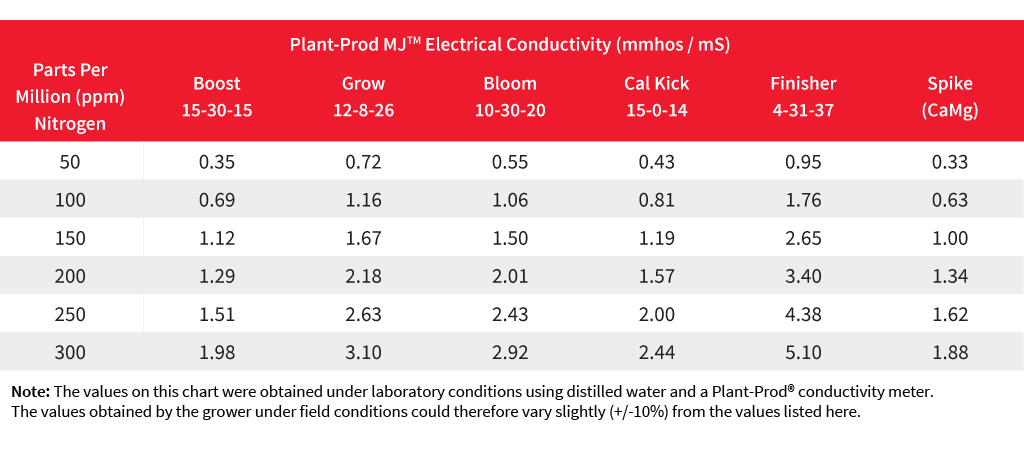Electrical Conductivity & Fertilizer Concentration
Regular monitoring of the electrical conductivity (EC) of your nutrient solution is a vital part of any fertigation program. Electrical conductivity is the ability of a solution to conduct an electrical current. Most elements (plant essential or other) that are soluble in water will contribute to the conductivity of water or a nutrient solution. As a result, the EC of a nutrient solution will increase as the water-soluble fertilizer concentration in solution is increased. By knowing the EC of a water-soluble fertilizer solution, you can predict the parts per million (ppm) of nutrients your plants are receiving, or that remain in your runoff water.
Each water-soluble fertilizer blend has a unique EC profile based on its concentration in solution due to the composition of the product. The following chart can be used to relate the EC of your Plant-Prod MJ TM nutrient feed with the associated parts per million (ppm) of Nitrogen:

Measuring EC
Most meters used by our growers are calibrated in mmhos per cm or mS per cm, which are interchangeable units. The data given here on our water-soluble fertilizers uses the same measurement. The above table can be used to measure the accuracy of water-soluble fertilizer injector systems by following these steps:

Example
- Conductivity of clear irrigation water is 0.60 mmhos / mS
- Conductivity of the final fertilizer solution using 10-30-20 is 2.05 mmhos / mS
- The conductivity due to the fertilizer is 2.05 mmhos / mS – 0.60 mmhos /mS = 1.45 mmhos / mS
- For 10-30-20, a conductivity reading of 1.45 mmhos / mS corresponds to a feeding rate of roughly 150 ppm of Nitrogen (N)
Stay tuned for our next post where we will cover the link between parts per million (ppm) of Nitrogen and mixing rates.
